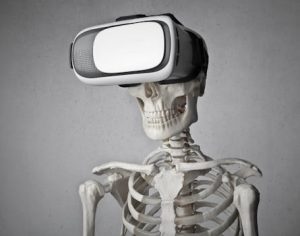AI is automating education workloads
The rise of artificial intelligence (AI) has undoubtedly transformed various industries and sectors. From healthcare to finance, AI is being hailed as the next big disruptor that will shape the future of work. In recent years, AI has also made its way into the education sector, where it is slowly but surely automating education workloads. With the increasing demand for personalized learning and fast-paced education, AI is proving to be a valuable partner in transforming the traditional education system. In this article, we will delve deeper into how AI is automating education workloads and the impact it has on the future of education.
The Benefits of AI in Education Workloads
AI is being implemented in education in various ways, from virtual tutors to chatbots, and even intelligent content creation. One of the biggest advantages of AI in education is its ability to automate repetitive and time-consuming tasks, thus freeing up educators to focus on more meaningful and creative tasks. Below are some ways in which AI is automating education workloads:
1. Personalized Learning
In a classroom setting, teachers are responsible for catering to the needs of all students, which can be a daunting task. With AI, personalized learning has become a reality. AI algorithms can analyze students’ learning patterns and create personalized learning plans tailored to their strengths and weaknesses. This not only saves teachers time but also ensures that students receive a customized education that meets their individual needs.
2. Grading and Feedback
Evaluating and grading assignments is a time-consuming task for educators. With AI, this process is now automated. AI algorithms can scan and grade assignments with high accuracy and provide immediate feedback to students. This not only saves time for teachers but also enables students to receive timely feedback, allowing them to improve their performance.
3. Content Creation and Delivery
Curating educational resources and creating lesson plans can take hours for teachers. AI-powered tools can now create lesson plans and generate study materials and quizzes, freeing up teachers’ time to focus on more interactive and engaging activities with students. Additionally, AI can deliver the content at a pace that is best suited for individual students, ensuring optimal learning.
The Impact of AI on the Future of Education
The integration of AI in education workloads has the potential to bring about significant changes in the education system. Here are some of the ways in which AI is shaping the future of education:
1. Improved Student Outcomes
With personalized learning, students can receive an education that is tailored to their needs, resulting in improved learning outcomes. AI also makes it possible for students to learn at their own pace, allowing them to fully grasp the concepts effectively.
2. More Efficient Education System
The use of AI in automating education workloads results in a more efficient education system. With tasks such as grading and content creation taken care of by AI, educators can focus on providing quality education and engaging with students in the classroom. This also means that teachers can handle more students, making education accessible to more individuals.
3. Better Use of Resources
AI is also being used to predict student performance, identify potential problems and develop interventions. This ensures that resources are used efficiently, and students receive the support they need to achieve their full potential.
Challenges and Limitations of AI in Education Workloads
While the benefits of AI in education workloads are undeniable, there are also challenges and limitations that need to be addressed for its successful implementation.
1. Cost and Access
Implementing AI-powered tools in education can be expensive, making it a challenge for schools and institutions with limited resources to adopt this technology. This creates an access gap, where only students from certain schools or areas can benefit from AI in education.
2. Privacy and Bias
The use of AI also raises concerns about privacy and bias. As AI algorithms are trained on existing data, they can perpetuate biases in the education system and affect students’ privacy. It is crucial to address these concerns and ensure that AI is used ethically in education.
Conclusion
AI is revolutionizing education by automating tedious tasks and enabling personalized learning. While there are challenges that need to be addressed, the potential of AI in shaping the future of education is immense. As technology continues to advance, it is essential to leverage AI in education to ensure that students receive quality education that prepares them for the future. With AI as a partner in education, the possibilities are endless.








